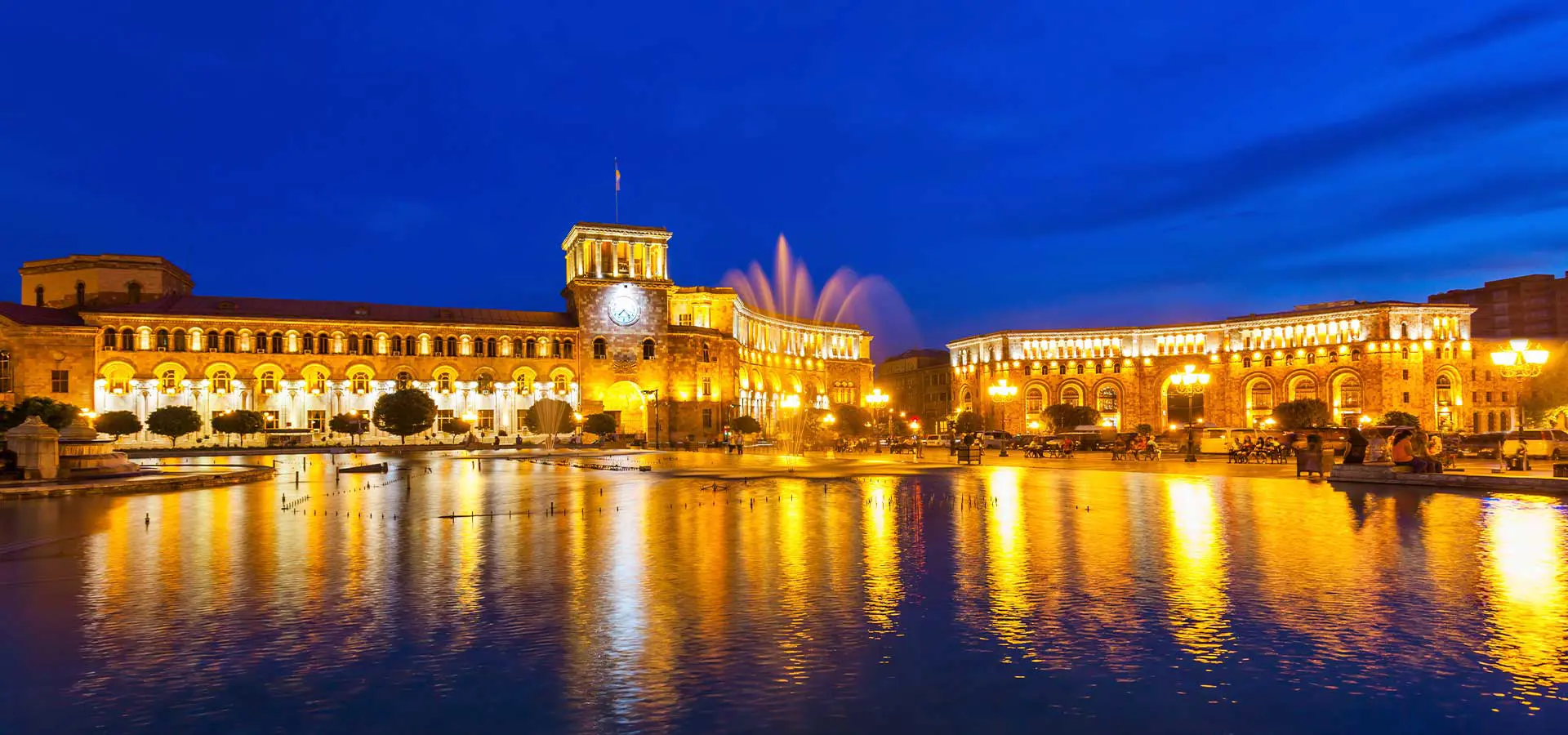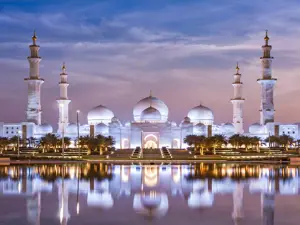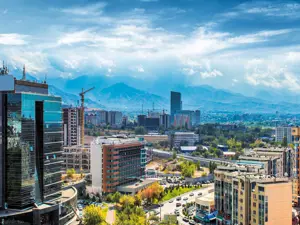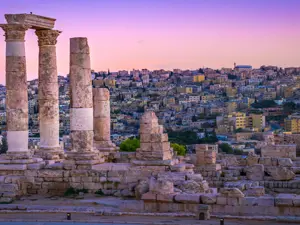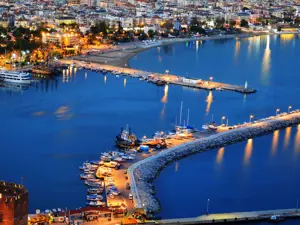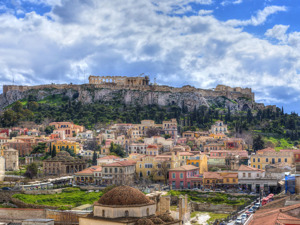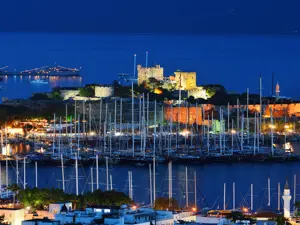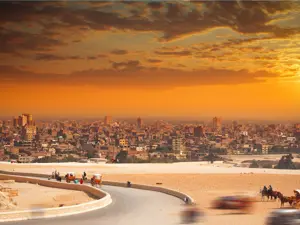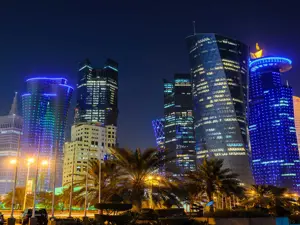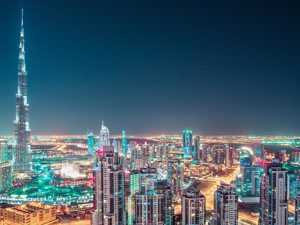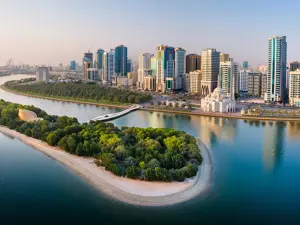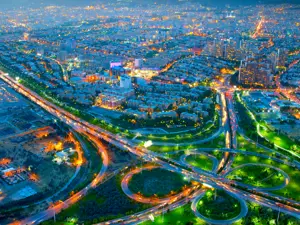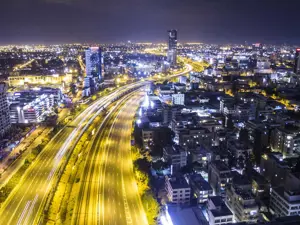Elegant capital of Armenia
It is said that whoever visits Yerevan cannot wait to return, not just for the spectacular view over the mountains of Ararat - mentioned in the Bible as the place where Noah’s Ark finally landed - and Ara to the north, and the picturesque expanse of the river Hrazdan to the south, as well as the vineyards, vegetable plots and flower-filled meadows, but also for the rich historic and cultural past that makes the capital of Armenia unique; a capital also known as the ‘pink city’ because of the colour of the tuff stone of many of its buildings.
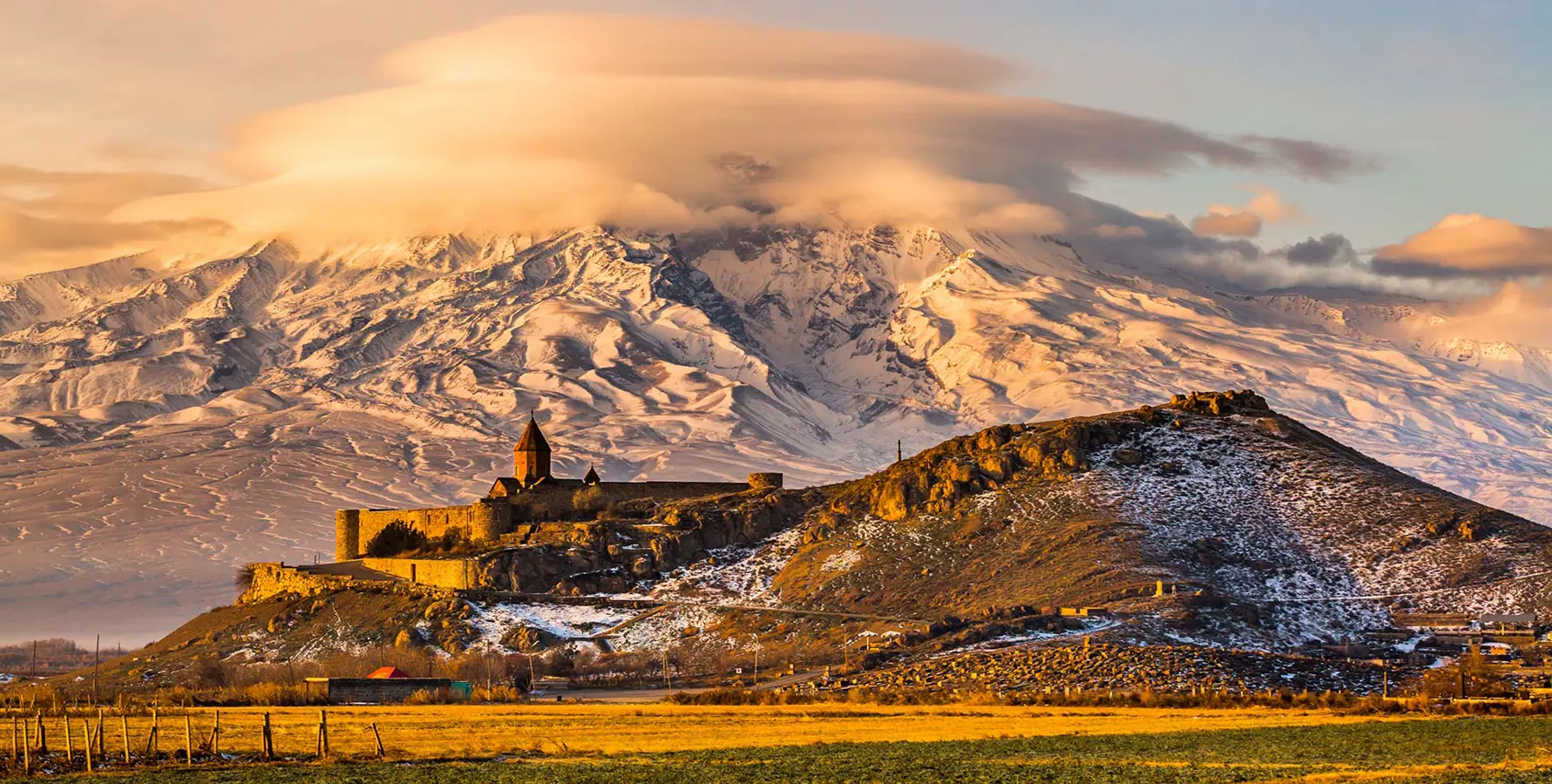
Mountains of Ararat. Armenia. Photo: Copyright © Sisterscom.com / Shutterstock
This ancient and elegant city, considered the ‘Paris of the Caucasus’, which today counts one million residents, has been inhabited until since the IV millennium BC and has seen the passage of various civilizations and ethnicities: Persians, Turks, Kurds and lastly Russians, who have all left their mark on the various architectural styles of the buildings.
The old military fortress of Erebuni towers over the city. Built in 782 BC to defend against attacks from the Caucasian people, it can be seen from every corner of the city, to which it gave its name (Erebuni, then Erevani, which changed to Erevan and internationalised to Yerevan). Symbolic Mount Ararat also appears on the city’s crest, which features the mountains surrounded by a winged lion, a symbol of courage.
A genuine open-air museum, the city also offers numerous large parks, such as Erebuni Park of some 17 hectares, Komitas Park and Pantheon, where famous Armenian personalities are buried, Lovers’ Park and the English Park.
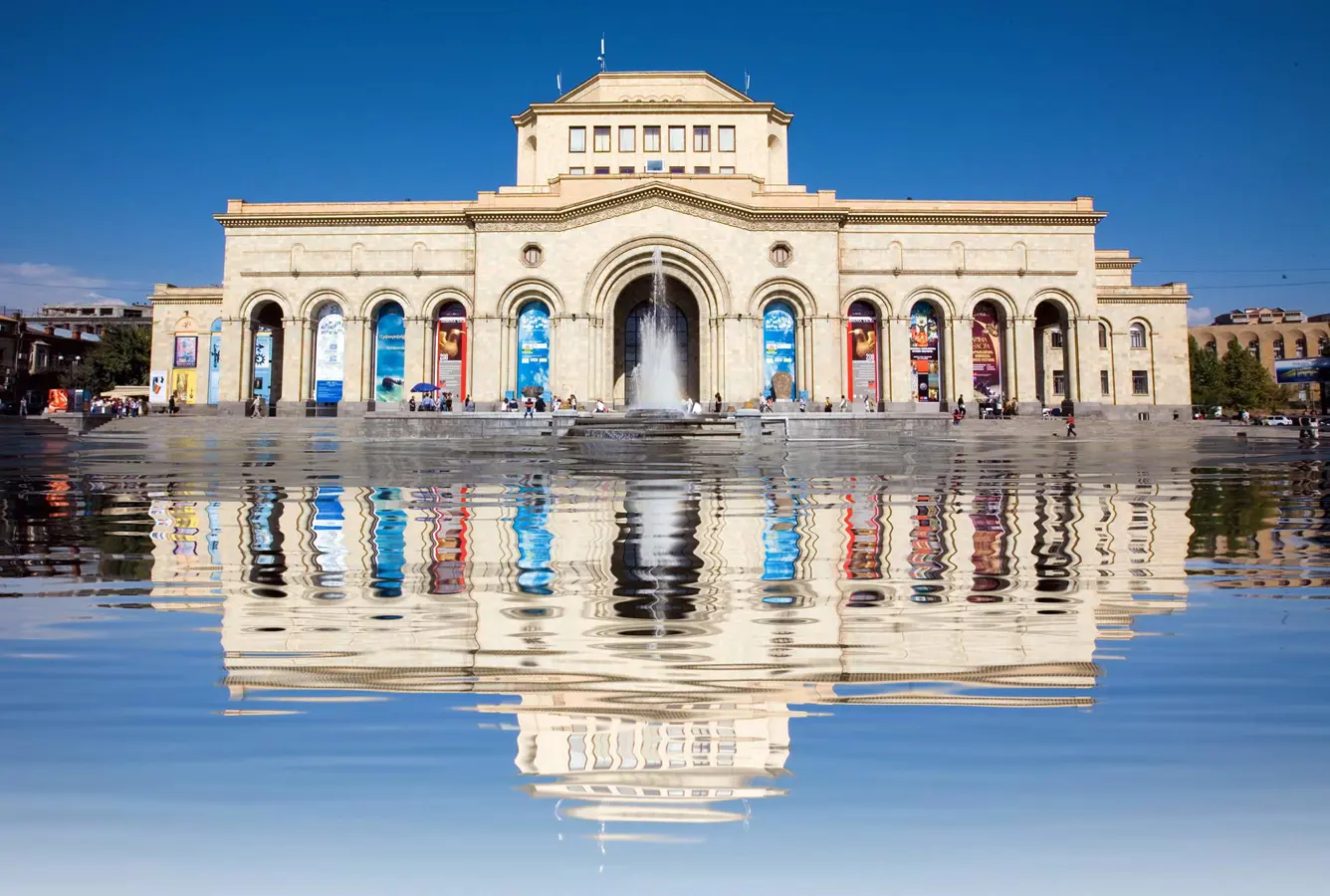
Republic square. Yerevan. Photo: Copyright © Sisterscom.com / Shutterstock
The history of the country is celebrated in the numerous museums such as the Matenadaran, which is filled with precious manuscripts, the National Gallery of Armenia, which is abundant with works of art, the Erebuni History and Archaeology Museum, which displays ancient artefacts, the History Museum of Armenia, which describes the history of the city, and the very moving Armenian Genocide Museum. Many of these museums are situated in Republic Square, beating heart of the city, where at sunset visitors can enjoy the extraordinary spectacle of the Musical Fountains.
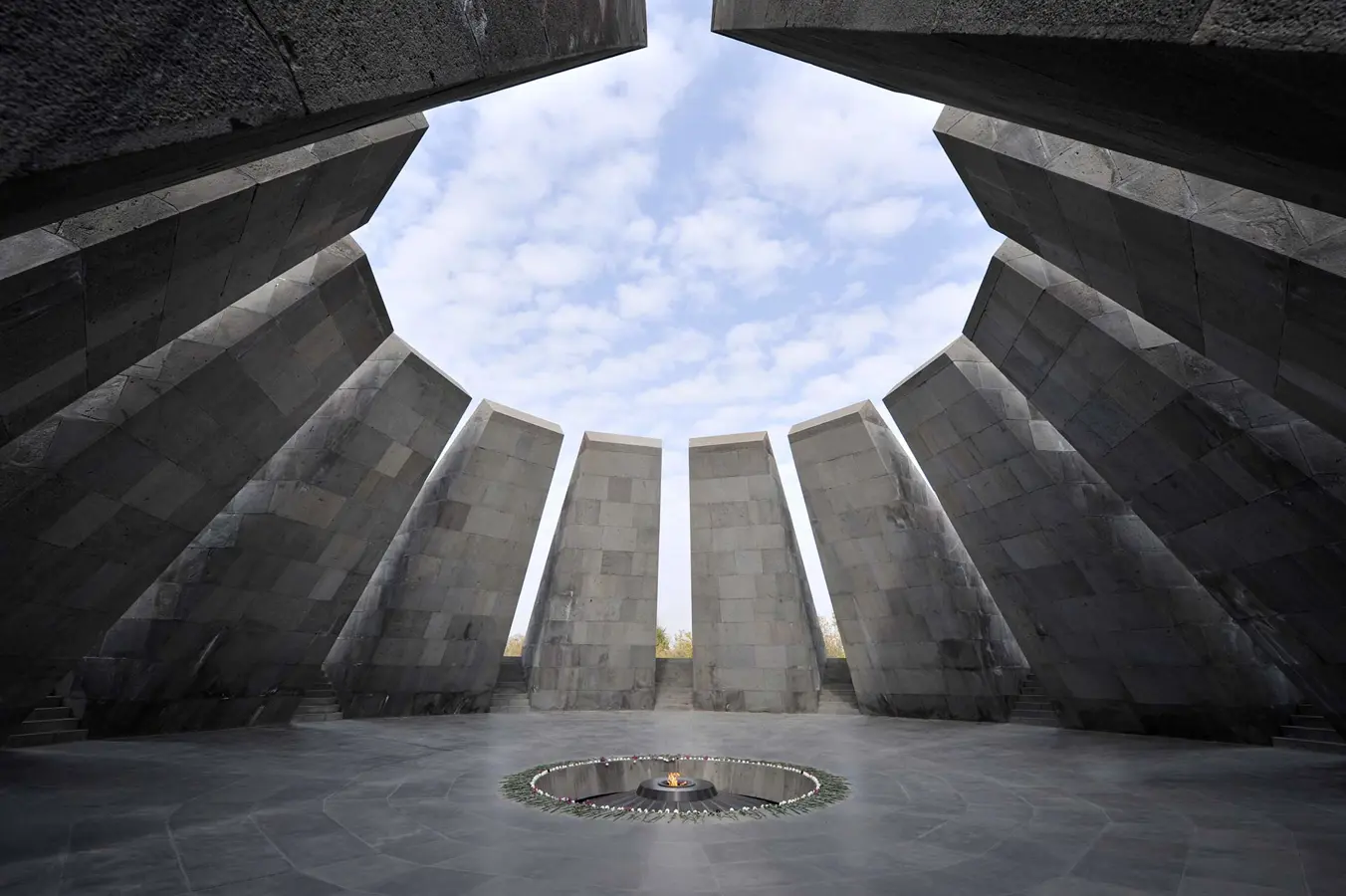
Armenian Genocide Museum. Yerevan. Photo: Copyright © Sisterscom.com / Shutterstock
If you’d like to take a souvenir home of this magical place, visit the vast open-air market of Yerevan Vernissage, which is open on Saturday and Sunday and displays local items, or walk along Albovyan or the luxury shopping streets of Parpetsi and Pushkin.
Yerevan also attracts tourists to its various festivals, which take place during the year, such as the Jazz Festival, the International Festival of Classical Music, Yerevan Wine Days, the Golden Apricot Film Festival and the Festival of Water, which combines fun and spirituality with music and religious songs.
Armenia is not just a country that loves music, art and the good life, but is also the heart of Christian spirituality - it was the first country in 301 to proclaim Christianity as its country’s religion - and this is seen in the many churches, which are genuine stone fortresses of similar styles with conical bell towers. One of the most important religious buildings is the solemn Cathedral of Saint Gregory the Illuminator, patron saint of Armenia.
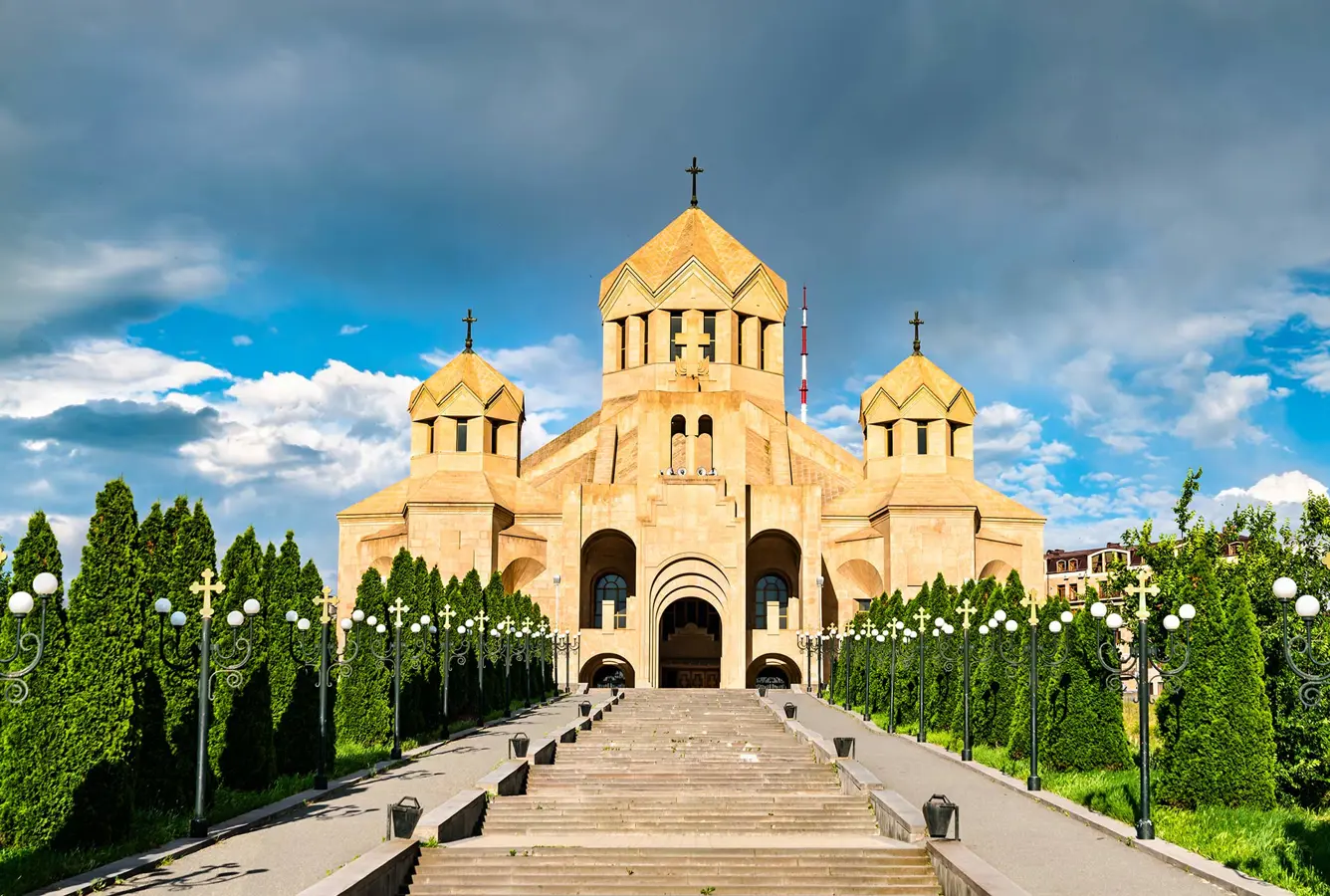
Cathedral of Saint Gregory. Yerevan. Photo: Copyright © Sisterscom.com / Shutterstock
Considered one of the safest city in the world, Yerevan at night become alive and its bars and restaurants bustle with groups of friends and tourists drinking, dancing and singing. The hospitality of its inhabitants is well known and is another added attraction for visitors who are made to feel like old friends with whom to share feasts and festivals and taste the famous local brandy, Ararat, which was much enjoyed by Churchill who received it as a gift from Stalin.
The cuisine is still inspired by traditional old recipes, in particular dishes of pulses and vegetables flavoured with spices and herbs; but also grilled meat such as pork, lamb and beef, accompanied by flavoursome sauces. Don’t miss tasting the extraordinary apricots, an Armenian fruit par excellence, or trying the famous garlic soup or dolma, a national dish made of meat and rice wrapped in cabbage or vine leaves.
Text by Anna Glik
Updated by Alisè Vitri
Avion Tourism Magazine
Photo: © Sisterscom.com, Shutterstock
All rights reserved. Copyright © Sisterscom.com
Tourism Board
yerevan.am
Partnership with Booking.com
Where to sleep in Yerevan
Yerevan is a welcoming city and offers different possibilities for accommodation.
To find the ideal hotel and the best offers you can do a search for the stars but also for districts or landmarks.
STARS
Hotels for stars, differentiated by type of services:
DISTRICTS
Hotels in the districts
LANDMARKS
Hotels in tourist areas
LANDMARKS
Hotels in tourist areas
WHERE TO GO in Yerevan
Churches of Yerevan
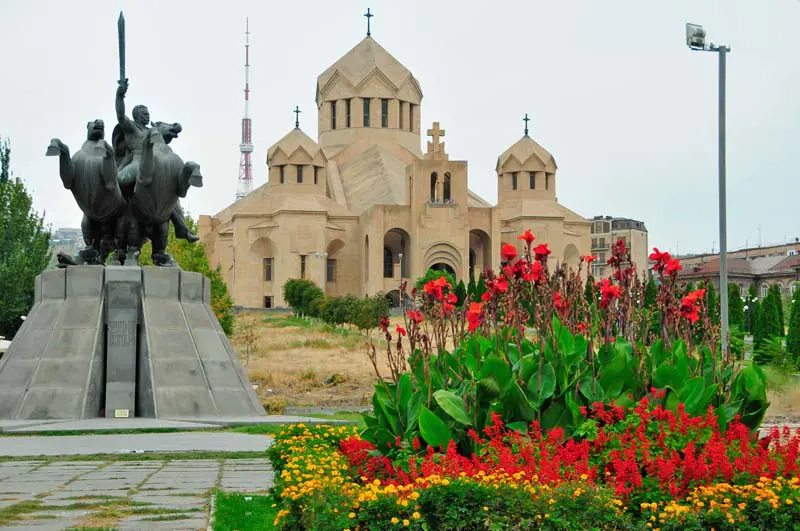
Photo: Copyright © Sisterscom.com / Shutterstock
SAINT GREGORY THE ILLUMINATOR
This spectacular building, which is also the Cathedral of Yerevan, is situated at the end of a long avenue of cypress trees. It consists of three stone buildings made of orange-tinted tuff and was built according to the architecture of ancient Christian basilicas but with Gothic-style elements. It features beautiful artistic windows best admired from inside.
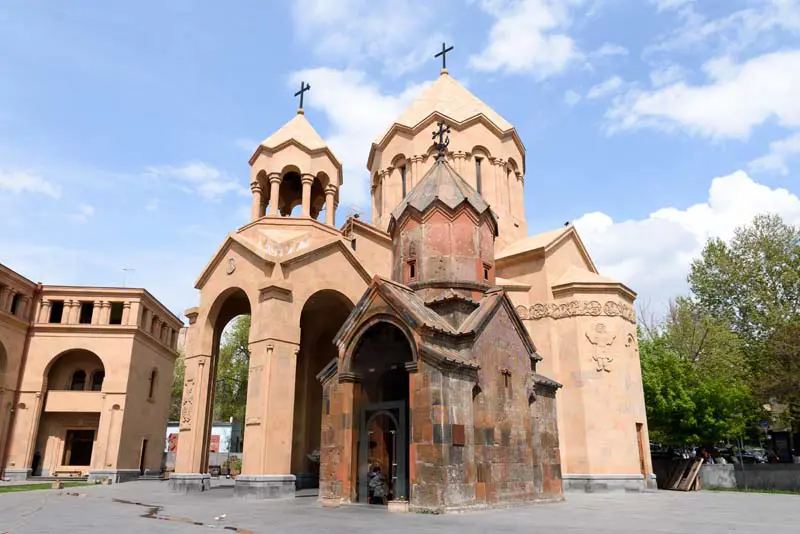
Photo: Copyright © Sisterscom.com / Shutterstock
KATOGHIKE HOLY MOTHER OF GOD CHURCH
This is a small medieval church, the oldest in the city, with interesting frescoes and sculptures. It is the only church to have survived the destruction of religious buildings in the Soviet era and is extremely important to the city’s worshippers who visit to light candles and pray. Religious services are held in the nearby Church of Saint Anna.
Museums in Yerevan
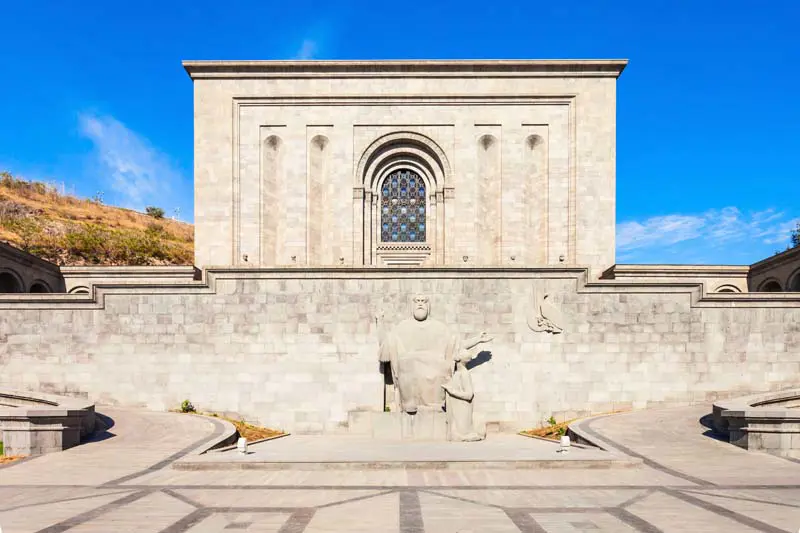
Photo: Copyright © Sisterscom.com / Shutterstock
MATENADARAN
Situated on a hill at the end of Mashtots Avenue, this singular museum features typical Armenian medieval architecture and preserves over 17,000 valuable manuscripts, 14,000 of which are in Armenian, the others in Arab, Persian, Indian, Georgian, Ethiopian and even Latin. Many of these manuscripts are exquisitely decorated with gold, silver, ivory and precious stones. Outside the building, along the façade are the statues of celebrities who brought prestige to Armenia.
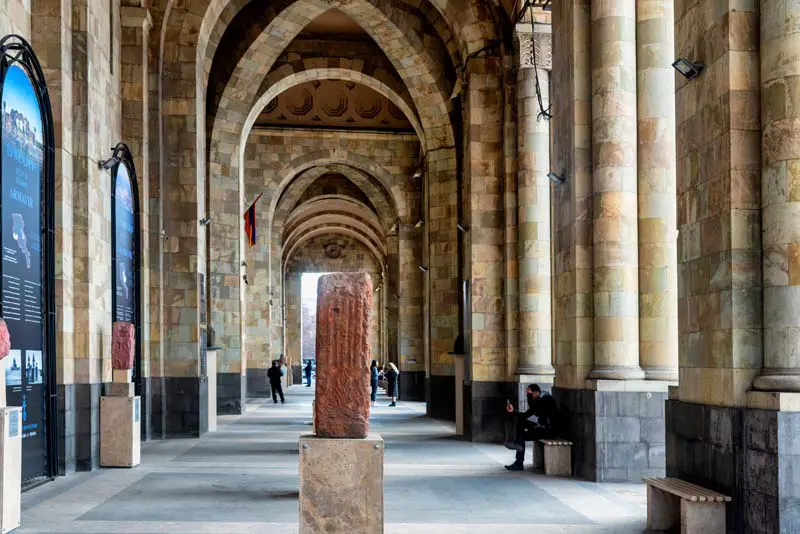
Photo: Copyright © Sisterscom.com / Shutterstock
HISTORY MUSEUM OF ARMENIA
Located on Republic Square, this museum displays over 400,000 objects relating to archeology, ethnography and numismatics, which illustrate in detail Armenian culture and history since ancient times: from approximately one million years ago to the present day. It also displays masterpieces of applied art, such as jewels in gold and silver, artistic bronze items, coins from different regions and eras and rugs as well as 50,000 very rare books.
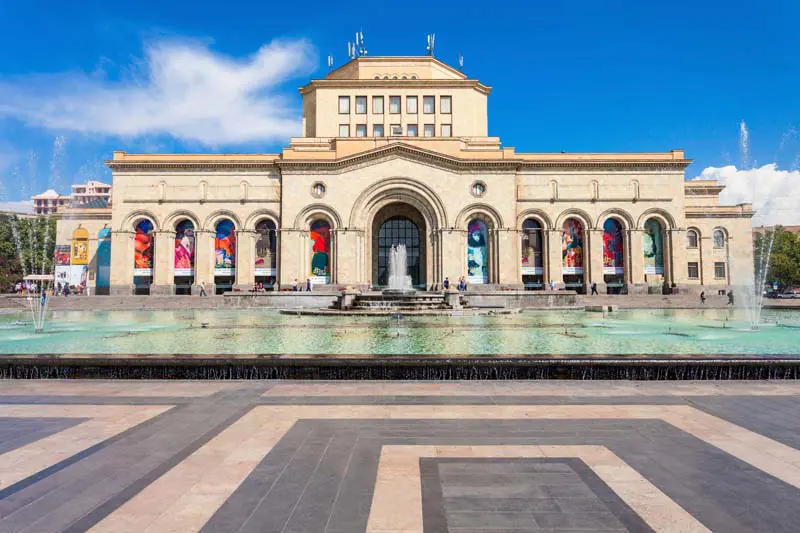
Photo: Copyright © Sisterscom.com / Shutterstock
NATIONAL GALLERY
OF ARMENIA
This extraordinary gallery, opened in 1921, is located in Republic Square inside a spectacular building. It houses works of art, paintings and sculptures as well as fine examples of applied art. There are works by Armenian, Russian and Asian artists, as well as Italian and French masters, including Tintoretto, Donatello, Antonio Canova, Courbet and many others. An interesting section is devoted to copies of frescoes from some of the most important Armenian churches.
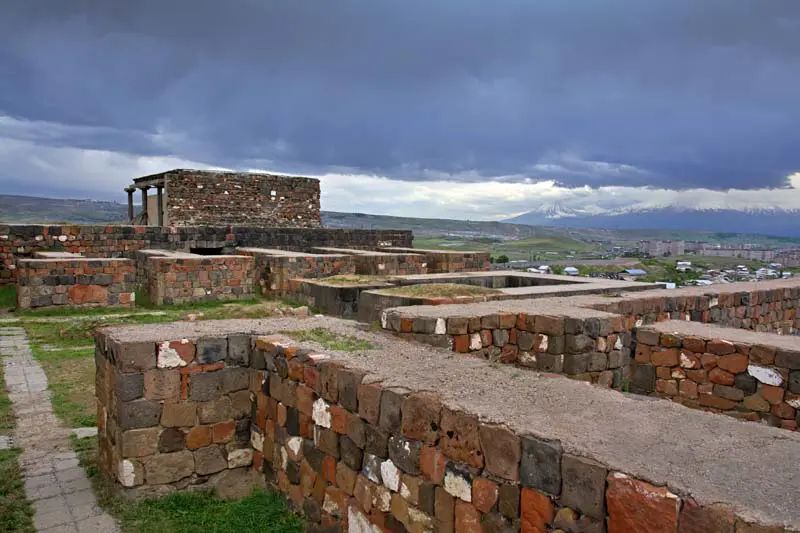
Photo: Copyright © Sisterscom.com / Shutterstock
EREBUNI HISTORICAL
AND ARCHAEOLOGICAL MUSEUM
Opened in 1968 at the foot of the hill of Arin Berd, the museum displays, along with cuneiform inscriptions, the history of the city, once the capital of Armenia with the name of Erebuni, which was founded by King Argishti in 782 BC. Objects of daily life such as tools for cooking, bronze bracelets, glass, clothes of the ancient inhabitants as well as weapons and shields were found during excavations of the ancient fortress of Erebuni, as well as murals and frescoes in the temple of the god Khaldi.
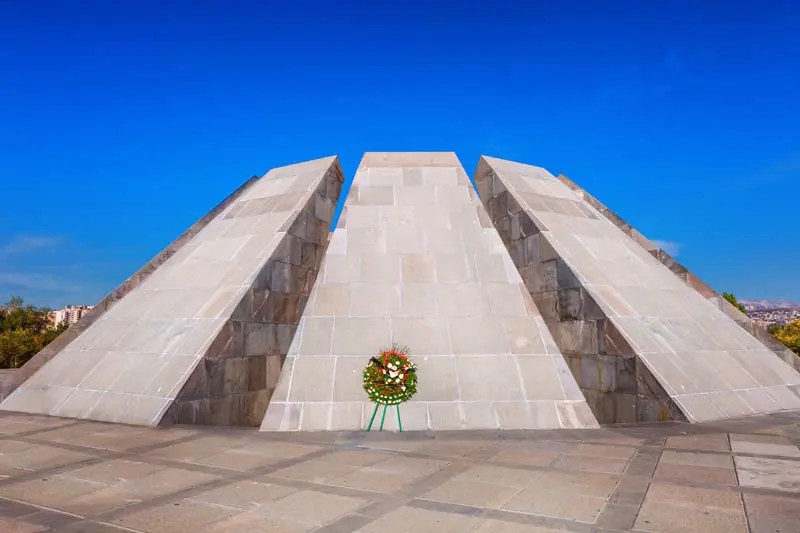
Photo: Copyright © Sisterscom.com / Shutterstock
GENOCIDE MUSEUM
Founded in 1995 to mark the 80th anniversary of the genocide of the population in 1915, the museum’s halls display documents and photos of many of the victims of the persecution of the Armenians by the Turkish government who feared a Russian-Armenian alliance against Turkey. There were a million victims and many people fled abroad, but every year in April Armenians from all over the world meet at this sanctuary for a solemn commemoration.
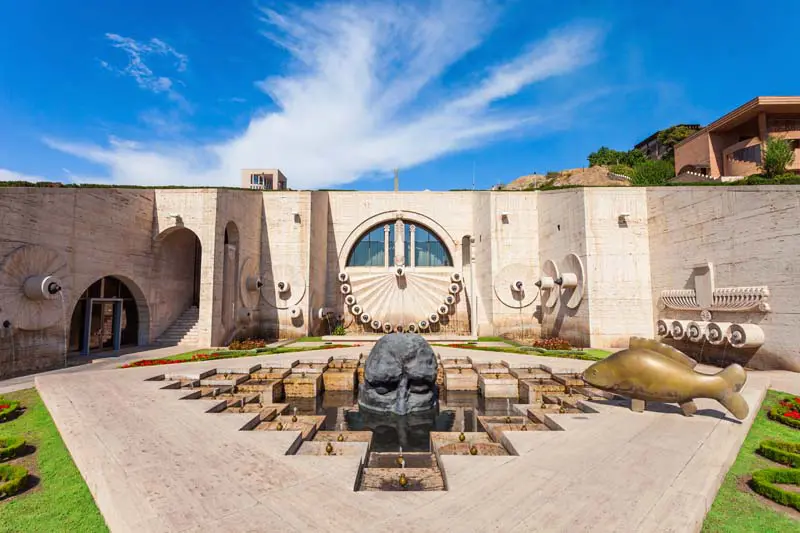
Photo: Copyright © Sisterscom.com / Shutterstock
CAFESJIAN CENTRE FOR THE ARTS
Founded by the philanthropist businessman Mr. Gerard Cafesjian after he donated his private collection, the Centre displays more than 5,000 art objects including the largest collection of glass in the world. It also displays contemporary Armenian art and features events such as concerts, films and educational programmes for adults and children. The building is surrounded by a vast garden with statues of contemporary artists including Botero.
Places of interest in Yerevan
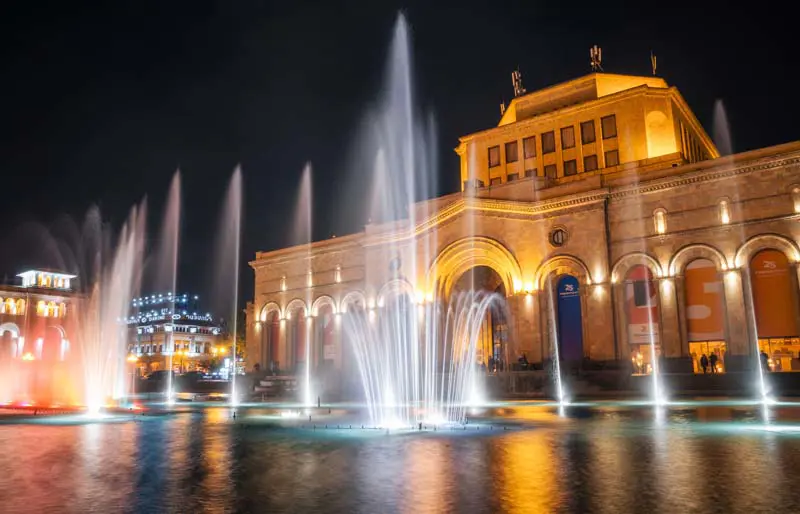
Photo: Copyright © Sisterscom.com / Shutterstock
DANCING FOUNTAINS OF YEREVAN
In Republic Square, in the heart of the city, the Dancing Fountains are considered to be “the architectural gem of the capital”. At sunset don’t miss the extraordinary spectacle of the musical fountain, which sprays water in time with music.
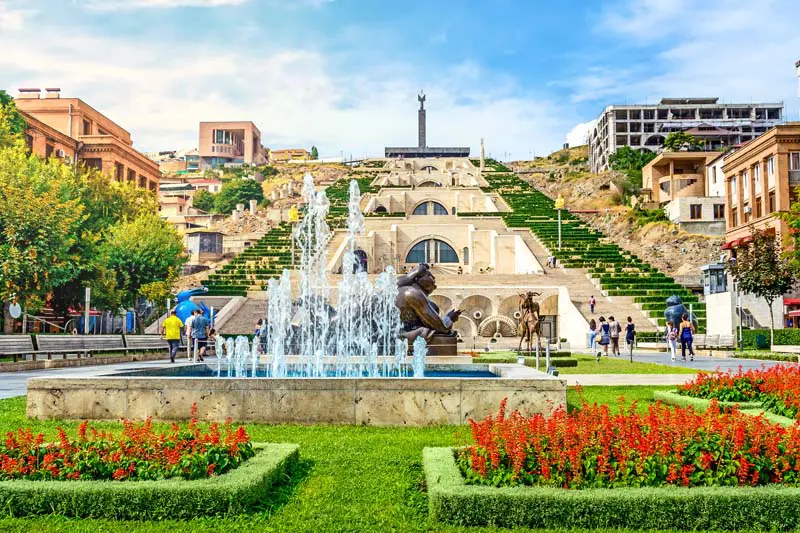
Photo: Copyright © Sisterscom.com / Shutterstock
THE CASCADE OF YEREVAN
This monumental stairway made of limestone is one of Yerevan’s main attractions. In the outer stairway are seven escalators that lead to the exhibition halls of the Cafesjian Museum of the Arts.
Partnership with GetYourGuide
Recommended excursions in Yerevan area
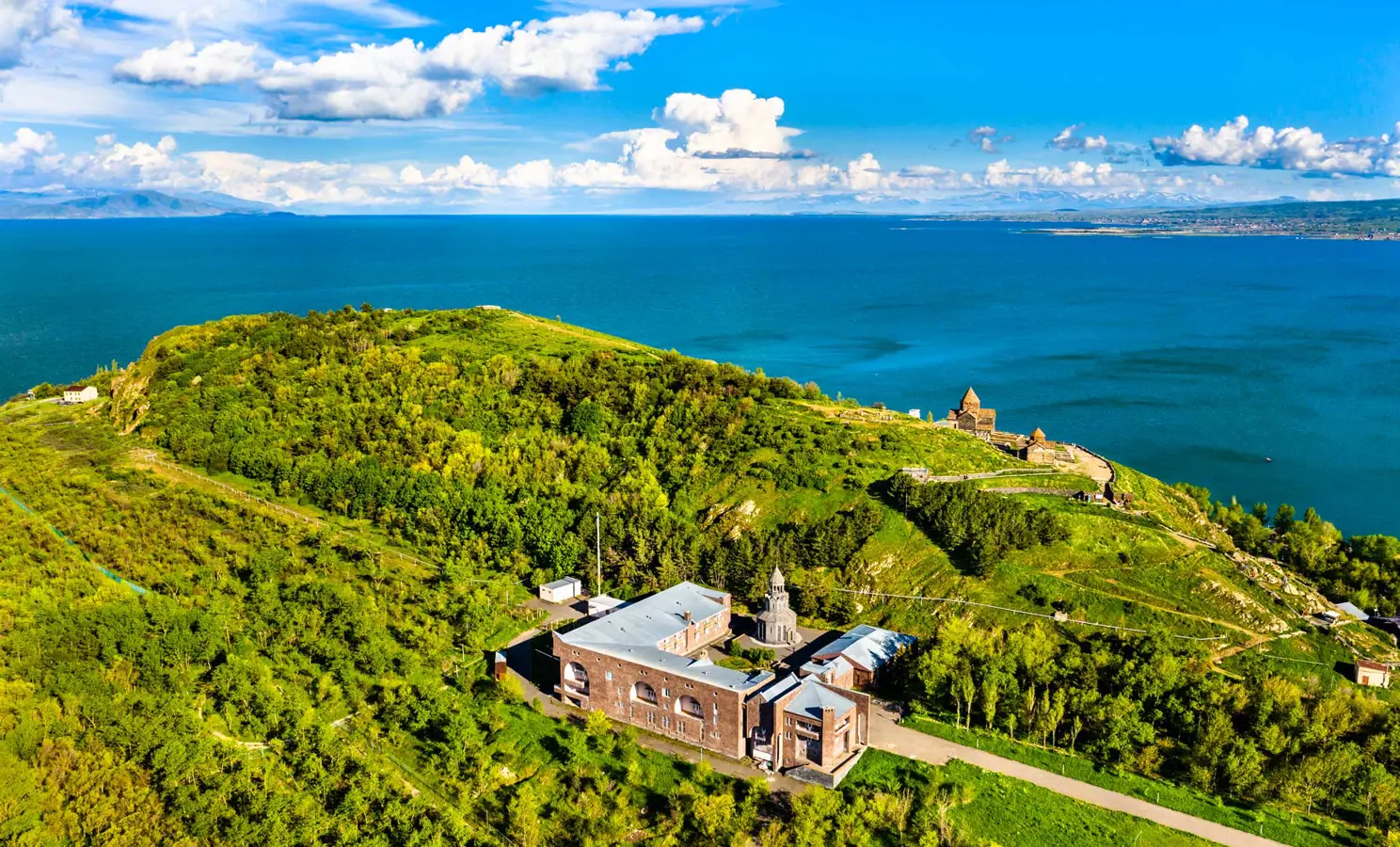
Sevanavank Monastery, Lake Sevan. Photo: Copyright © Sisterscom.com / Shutterstock
LAKE SEVAN, DILIJAN, GOSHABANK and HAGHARTSIN
An excursion between art culture and nature of Armenia to visit Lake Sevan, Sevanavank (a 9th century monastery), Dilijan (called little Switzerland) and the Monasteries of Goshavank and Haghartsin. The Lake Sevan is located about an hour's drive from Yerevan. Private tour: Lake Sevan, Dilijan, Goshavank and Haghartsin.
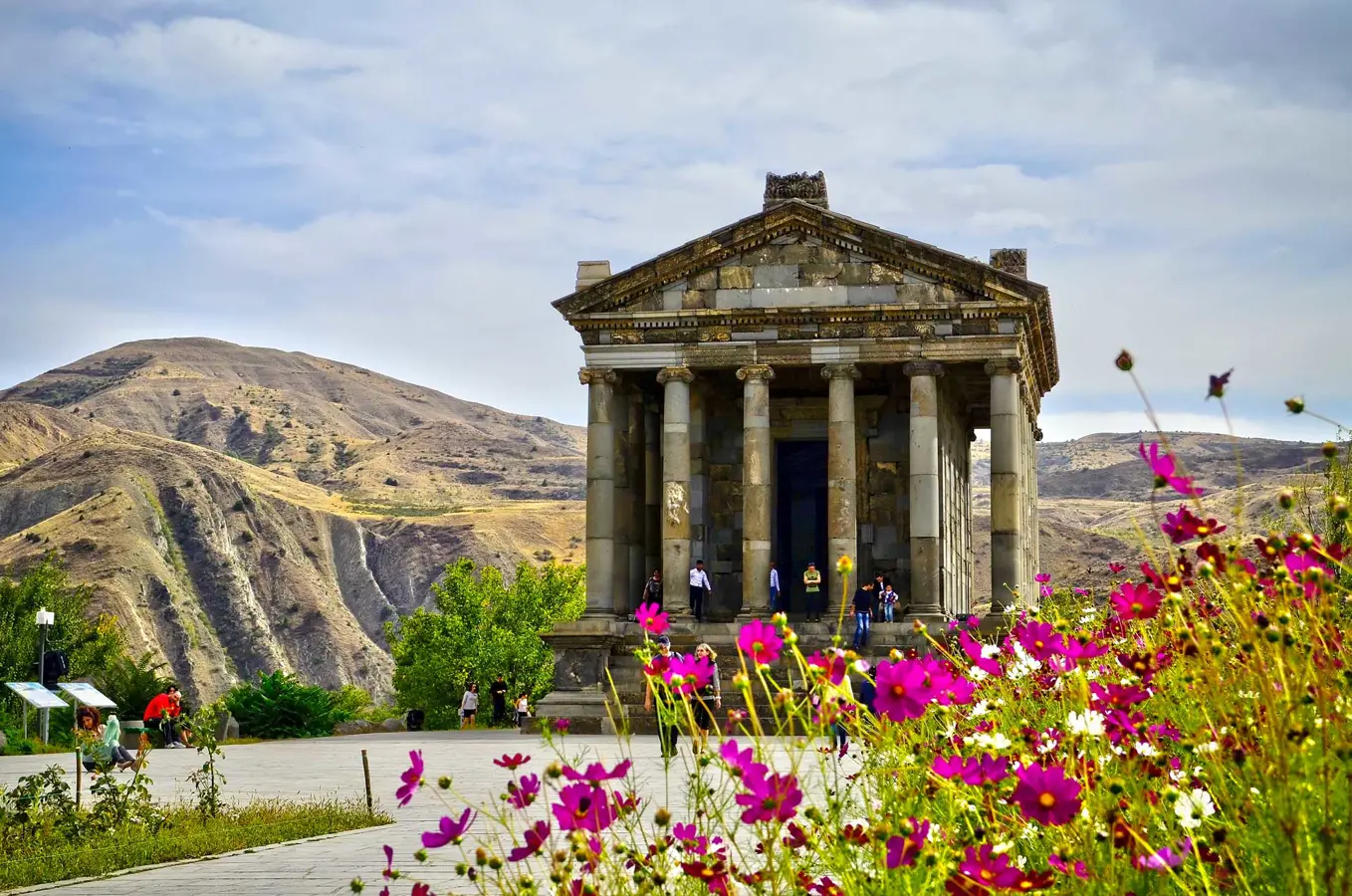
Garni Temple. Photo: Copyright © Sisterscom.com / Shutterstock
GARNI TEMPLE and GEGHARD MONASTERY
An excursion from Yerevan to admire the UNESCO World Heritage treasures of Armenia: Garni and Geghard. We visit the Temple of Garni, symbol of pre-Christian Armenia, then Ararat ARC with a view of Mount Ararat. Continue to the Geghard Monastery, a UNESCO heritage site where churches are found in caves or carved into the rock. Tour from Yerevan to Garni and Geghard.
MYSTICAL AND SECRET SITES OF ARMENIA
Departure from Yerevan to Khor Virap, Armenian pilgrimage site with a view of Mount Ararat. Continue to Areni with a stop in a cellar and you will reach the mysterious Greni di Areni 1, an archaeological site from the Chalcolithic period (4500-3400 BC). Then you arrive in Soth to see Noravank, a UNESCO World Heritage Site, one of Armenia's largest medieval monasteries. Tour of the mystical places of Armenia from Yerevan.
All the tours
You might be interested in
Destinations found in the vicinity
Other destinations
Airports nearby Yerevan

